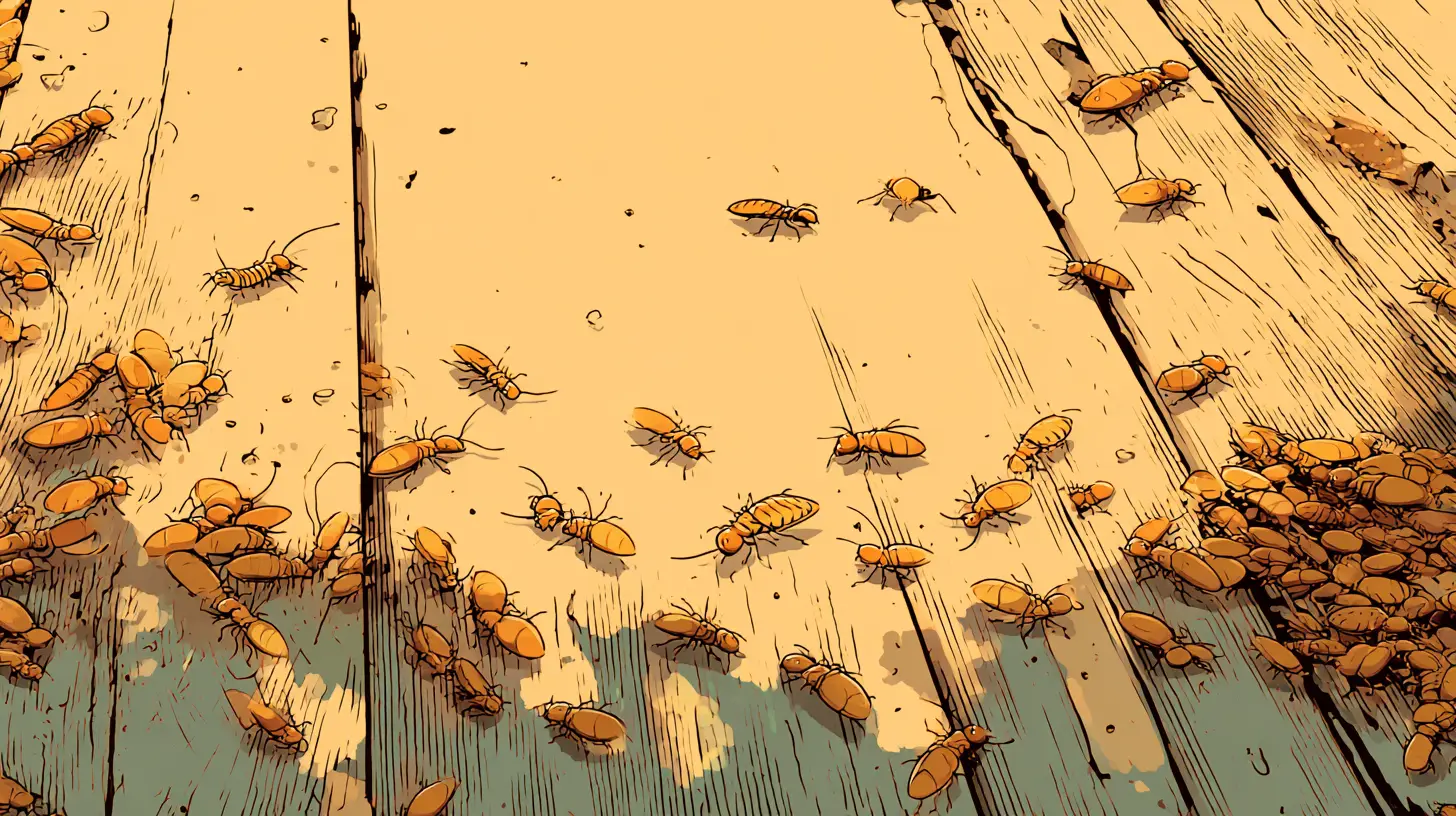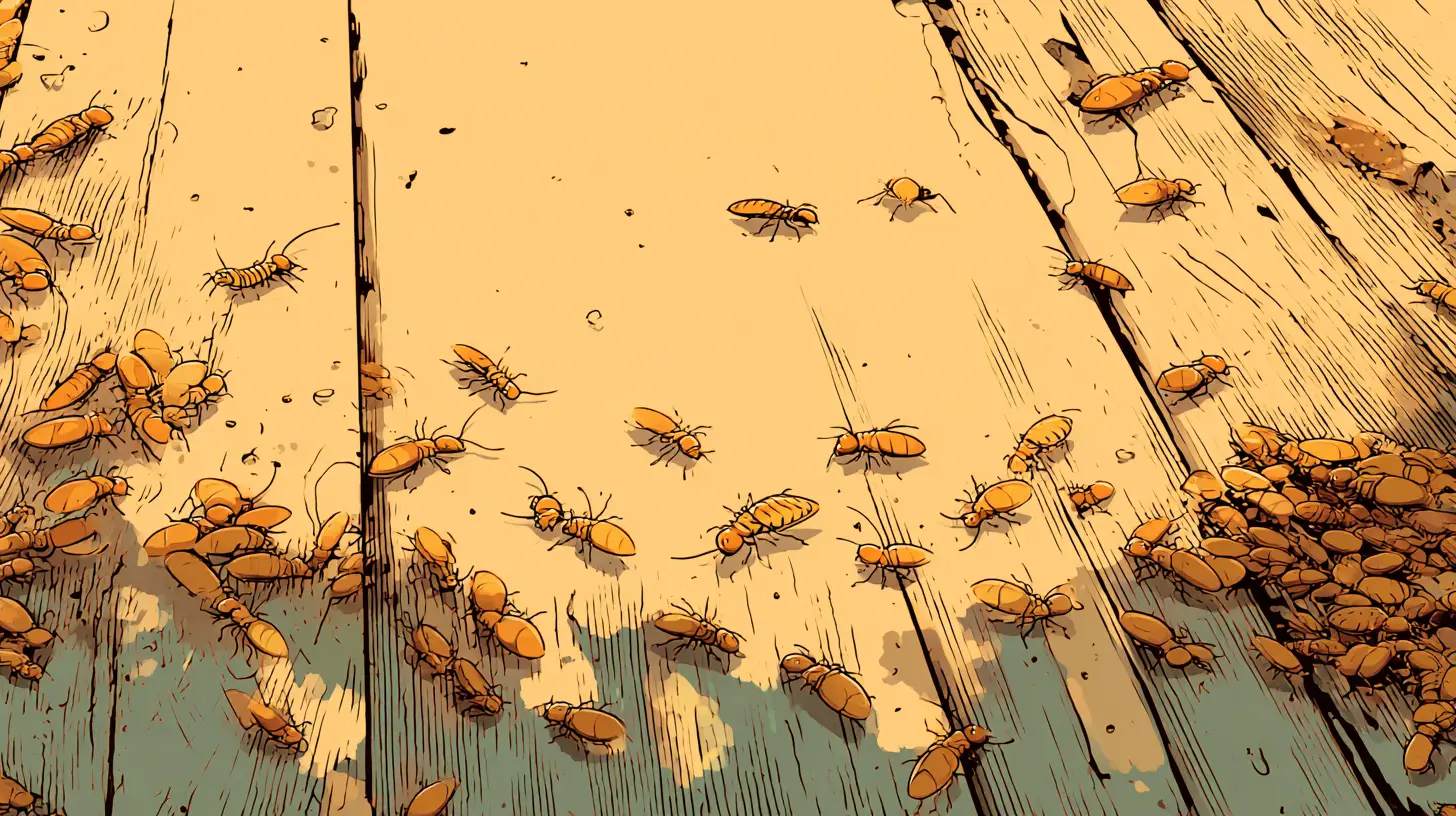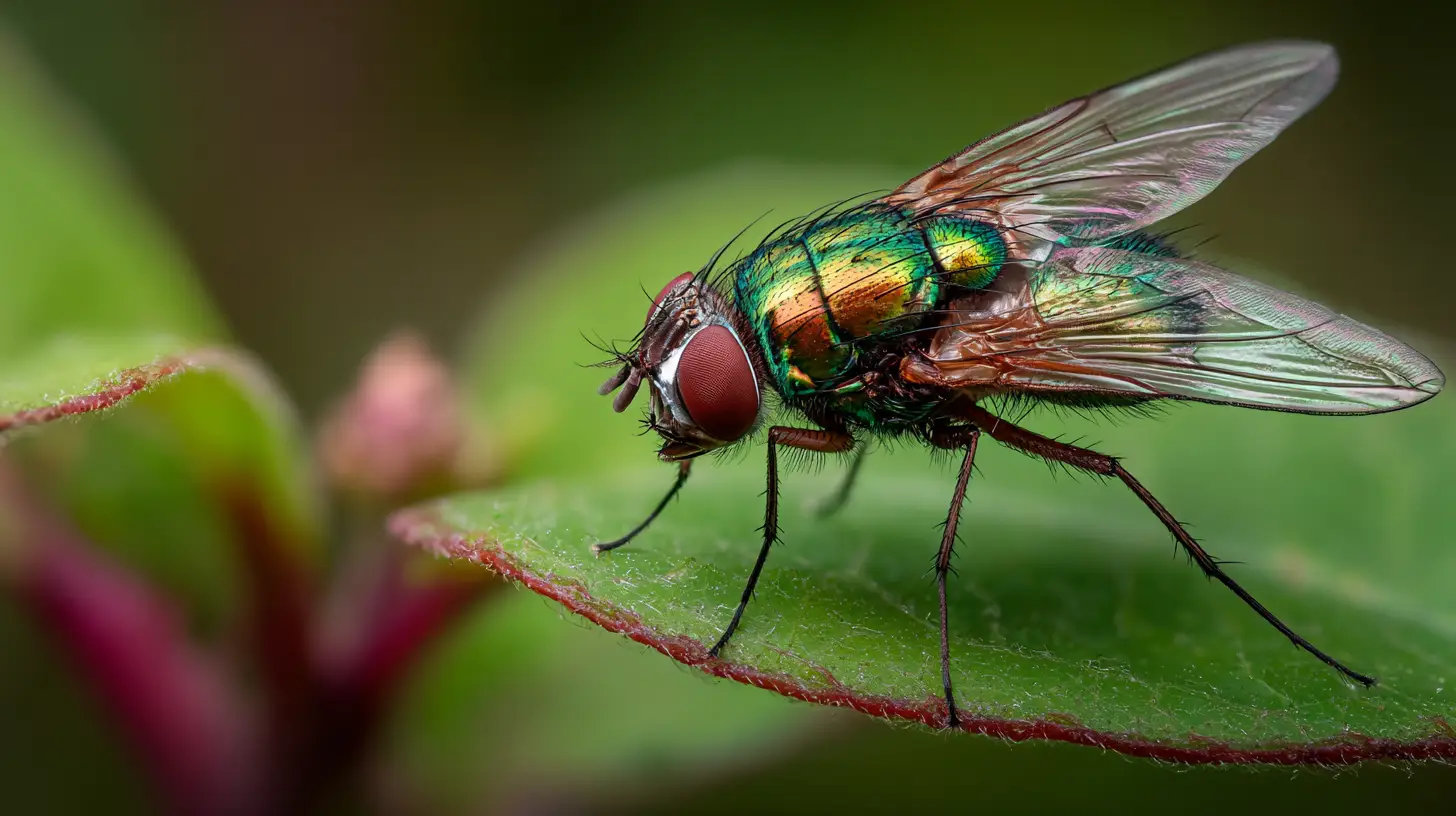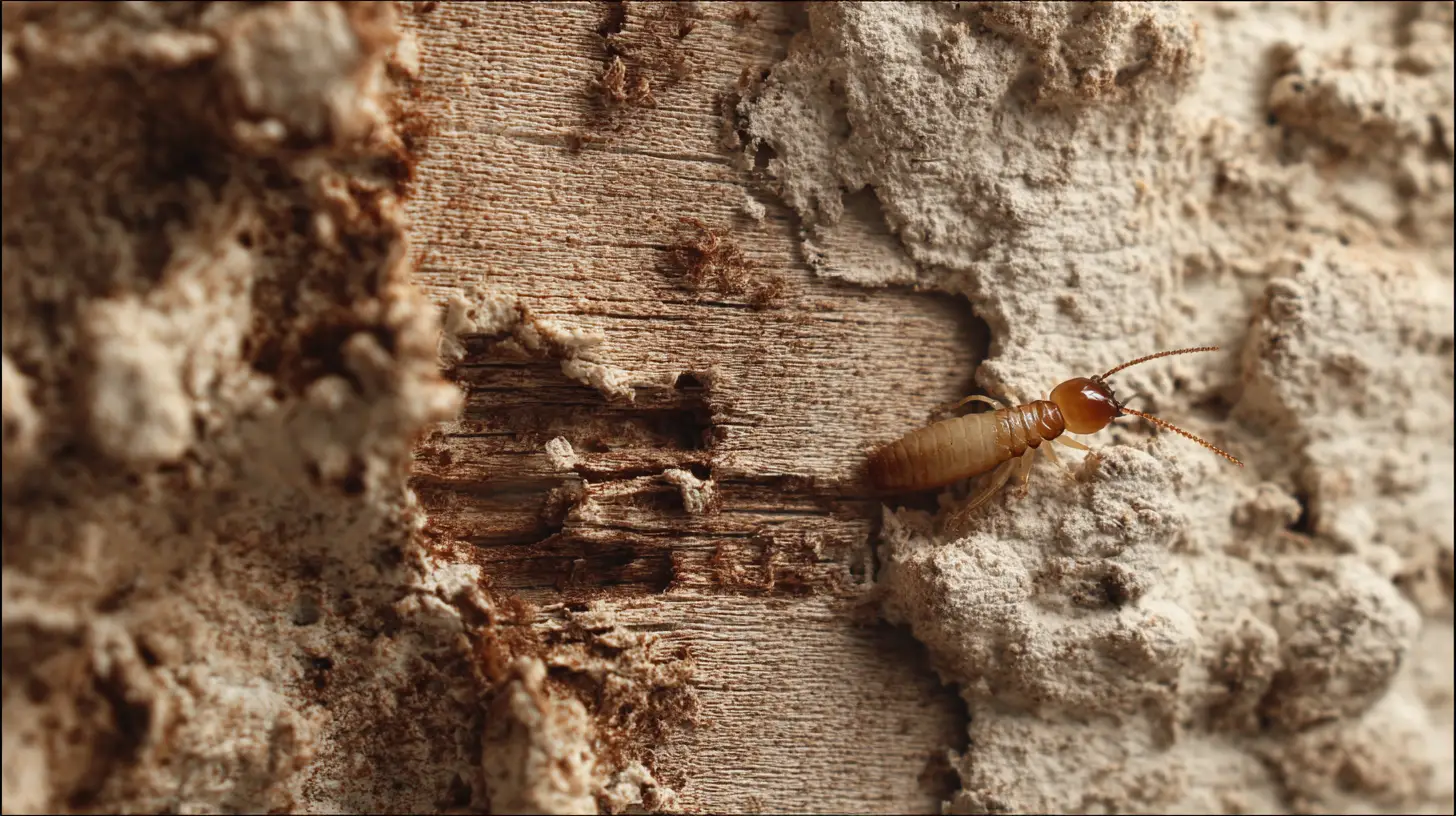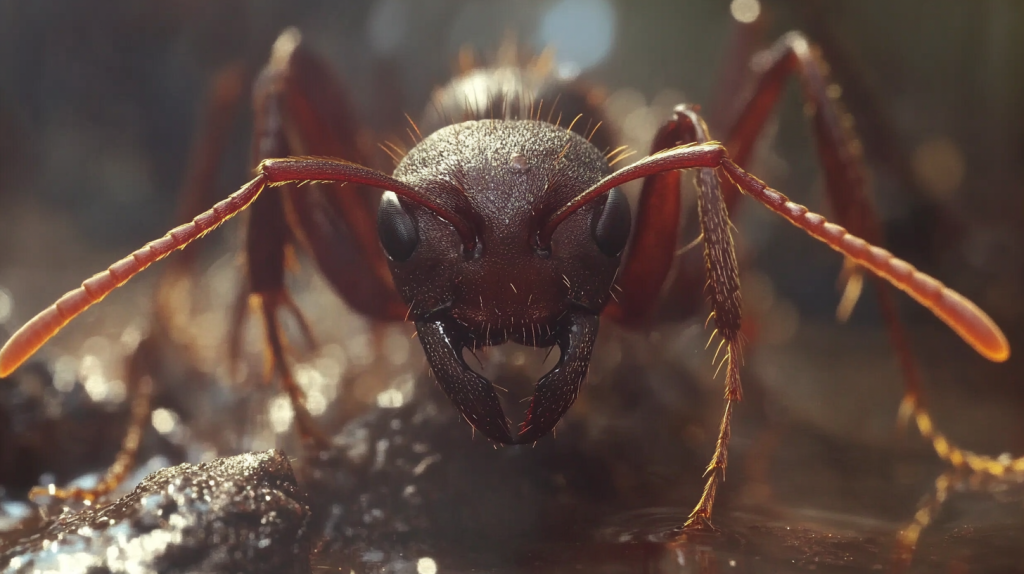
Table of Contents
Fire ants are one of the most persistent and painful pests facing Bradenton homeowners. These aggressive imported red fire ants (Solenopsis invicta) thrive in our warm, humid Southwest Florida climate, making effective fire ant treatment in Bradenton, FL essential for safe outdoor enjoyment. This comprehensive guide covers the most effective treatment options, application methods, and safety considerations for controlling fire ants in your Bradenton property.
Key Takeaways
- Two-Step Approach Works Best: Combine broadcast baits for overall population control with individual mound treatments for complete elimination.
- Timing is Critical: Apply treatments when ants are actively foraging (65-90°F soil temperature) and no rain is expected for 24 hours.
- Bait Products Most Effective: Granular baits like Amdro and Advion provide long-term colony elimination by targeting queens.
- Safety First: Follow all label directions, use appropriate protective equipment, and restrict access during and after applications.
- Organic Options Available: Spinosad baits and d-limonene provide effective control with minimal environmental impact.
- Consistent Treatment Necessary: Fire ant control requires ongoing management—single treatments rarely provide permanent solutions.
Why Fire Ant Treatment is Critical in Bradenton
Bradenton’s year-round warm temperatures and abundant rainfall create ideal conditions for fire ant colonies to flourish. These invasive pests pose serious threats to families, pets, and outdoor activities through their aggressive behavior and painful stings that can cause severe allergic reactions in sensitive individuals.
Fire ants in Bradenton are particularly problematic because:
- Colonies remain active throughout most of the year
- Each colony can contain up to 500,000 workers
- Queens can live 6-7 years, continuously expanding populations
- Multiple queens per colony accelerate reproduction
- Aggressive defense of territory leads to unprovoked attacks
Without proper fire ant treatment, these pests can quickly overwhelm lawns, gardens, and outdoor spaces, making them unsafe for children and pets.
The Two-Step Method: Most Effective Fire Ant Treatment for Bradenton
The University of Florida recommends a two-step approach as the most effective fire ant treatment method:
Step 1: Broadcast Bait Application
Apply granular fire ant bait across the entire treatment area to target 90% of colonies. This foundational treatment eliminates most fire ant populations over several weeks.
Step 2: Individual Mound Treatment
Treat any visible mounds that persist after baiting with targeted applications to eliminate remaining colonies.
This combination approach provides comprehensive control while minimizing pesticide use and environmental impact.
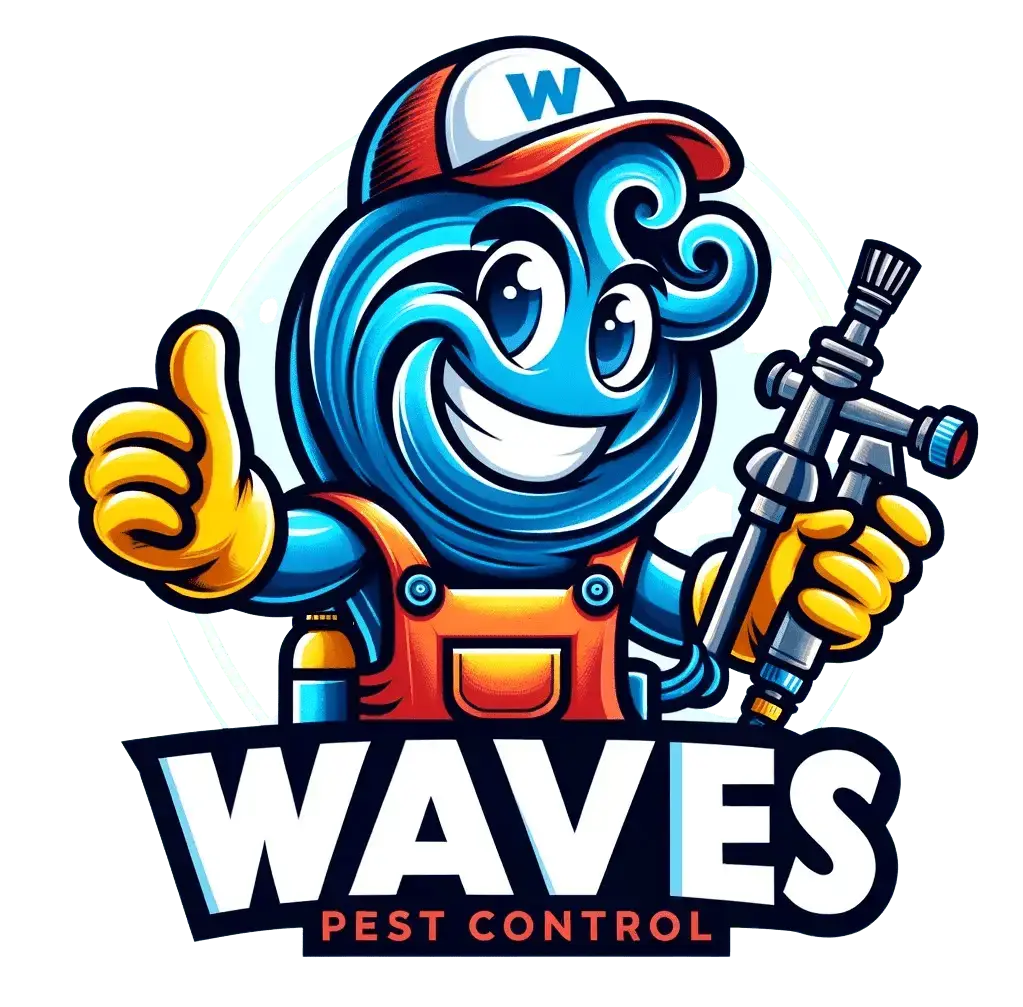
Get Pest-Free Today!
Trust Waves Pest Control for expert pest solutions in Florida. Call now or request your free quote online!
Request a QuoteTop Chemical Fire Ant Treatments for Bradenton
Amdro Fire Ant Killer: The Gold Standard
- Active Ingredients: Hydramethylnon (0.036%) + Methoprene
- Application Method: Broadcast granular application using spreader
- Effectiveness Timeline: Kills queens in 1-2 weeks, provides seasonal control
- Target Areas: Entire lawn treatment for comprehensive colony elimination
- Pet Safety: Very low toxicity to people, animals, and birds
- Why It Works: Combines fast-acting colony elimination with long-term population suppression through insect growth regulation.
Advion Fire Ant Bait: Professional-Grade Control
- Active Ingredients: Indoxacarb (0.045%)
- Application Method: Broadcast granular bait
- Effectiveness Timeline: Colony elimination in 1-2 weeks
- Target Areas: Broadcast treatment across infested areas
- Pet Safety: Low mammalian toxicity when used as directed
- Advantages: Faster acting than many alternatives with excellent colony control rates.
Siesta Fire Ant Bait: Rapid Results
- Active Ingredients: Metaflumizone (0.063%)
- Application Method: Broadcast granular application
- Effectiveness Timeline: Colony control in 7-14 days
- Target Areas: Lawn-wide treatment for comprehensive control
- Pet Safety: Protect pets and beneficial insects during and after application
- Benefits: Among the fastest-acting baits available for fire ant control.
Fast-Acting Contact Treatments for Immediate Relief
When you need immediate fire ant control in Bradenton—especially around play areas or high-traffic zones—contact treatments provide rapid knockdown.
Ortho Fire Ant Killer Granules
- Active Ingredients: Bifenthrin (0.20%)
- Application Method: Broadcast granules, then water into soil
- Effectiveness: Immediate paralysis of worker ants
- Limitations: Does not eliminate queens; requires follow-up treatment
- Safety: Keep pets and children away until dry
- Best Use: Emergency situations requiring immediate ant control
Orange Guard Fire Ant Control: Natural Alternative
- Active Ingredients: d-Limonene (5.8%) from orange oil
- Application Method: Liquid mound drench (dilute 1:3 with water)
- Effectiveness: Kills ants on contact within minutes
- Safety: FDA GRAS ingredients, OMRI-listed organic
- Pet Safety: Safe around pets and children once dry
- Application: Pour 1-2 gallons directly into mound holes
- Advantages: Immediate results with minimal environmental impact
Organic Fire Ant Treatment Options for Bradenton
Spinosad-Based Baits: Natural Colony Control
- Products: Fertilome Come and Get It!, Southern Ag Payback Fire Ant Bait
- Active Ingredients: Spinosad (0.015%) – bacterial-derived insecticide
- Effectiveness Timeline: Colony suppression in 2-4 weeks
- Safety Profile: OMRI-listed, extremely low mammalian toxicity
- Application: Broadcast granular bait application
- Benefits: Effective organic option safe for families and pets
Boric Acid Solutions: Low-Toxicity Alternative
- Application: 1% boric acid solution applied to mounds
- Effectiveness: Up to 90% colony reduction when properly applied
- Safety: Very low human and pet toxicity
- Considerations: Requires proper concentration—too strong kills workers before reaching queen
Optimal Timing for Fire Ant Treatment in Bradenton
Seasonal Considerations
Best Treatment Periods:
- Spring (March-May): Ideal for broadcast bait applications
- Fall (October-November): Excellent for long-term colony suppression
- Year-Round: Individual mound treatments as needed
Daily Timing
Optimal Application Times:
- Early Morning (7-10 AM): Cool temperatures, active ant foraging
- Late Evening (6-8 PM): Cooler conditions encourage bait acceptance
- Soil Temperature Range: 65-90°F for maximum ant activity
Weather Considerations
Ideal Conditions:
- Calm, dry day with no wind
- No rain expected for 24 hours after application
- Ground temperature within optimal range
- Low humidity preferred for granular applications
Application Methods for Effective Fire Ant Treatment in Bradenton
Broadcast Bait Application
Equipment Needed:
- Calibrated spreader (hand-crank or push-type)
- Measuring tools for accurate rates
- Protective equipment (gloves, long sleeves)
Application Steps:
- Apply bait at labeled rates (typically 1-2 lbs per acre)
- Ensure even coverage across treatment area
- Avoid disturbing ant mounds before application
- Do not water in granular baits
- Allow 24-48 hours rain-free period
Individual Mound Treatment
Direct Application Method:
- Sprinkle 1-2 tablespoons of granular bait around mound
- Do not disturb the mound structure
- Allow ants to discover and carry bait into colony
- Retreat persistent mounds after 7-10 days
Drench Method (for contact treatments):
- Puncture mound in multiple locations
- Apply 1-2 gallons of treatment solution
- Treat during cooler parts of day
- Ensure thorough saturation of colony chambers
Safety Guidelines for Fire Ant Treatment in Bradenton
Personal Protection
During Application:
- Wear long sleeves, pants, and closed-toe shoes
- Use chemical-resistant gloves
- Avoid application during windy conditions
- Wash hands thoroughly after handling products
Around Fire Ant Areas:
- Wear protective footwear in infested areas
- Teach children to identify and avoid fire ant mounds
- Keep first aid supplies readily available
- Know signs of allergic reactions
Pet and Family Safety
Granular Bait Products:
- Keep children and pets away during application
- Allow re-entry once granules have settled
- Amdro and similar baits have very low toxicity profiles
- Follow specific label restrictions for each product
Contact Treatments:
- Restrict access until products have dried completely
- Pyrethroid products require longer restricted entry periods
- Orange Guard and organic options typically safe once dry
Emergency Preparedness:
- Keep antihistamines and first aid supplies available
- Know location of nearest urgent care facility
- Understand when to seek emergency medical attention
- Consider allergy testing for sensitive family members
Preventing Fire Ant Reinfestation in Bradenton
Landscape Management
Reduce Attractive Conditions:
- Maintain proper lawn drainage
- Remove food sources (pet food, fallen fruit)
- Keep compost areas covered and managed
- Eliminate standing water sources
Physical Barriers:
- Install gravel borders around structures
- Use landscape fabric in garden beds
- Maintain clear zones around foundations
- Regular mowing reduces harborage areas
Monitoring and Maintenance
Regular Inspection:
- Check property monthly for new mounds
- Focus on sunny, open areas where ants prefer nesting
- Monitor areas near water sources and irrigation systems
- Inspect after heavy rains when ants relocate
Proactive Treatment:
- Apply broadcast baits twice yearly (spring and fall)
- Treat new mounds immediately upon discovery
- Maintain treatment records for timing future applications
- Consider professional service for large properties
Frequently Asked Questions (FAQs)
What’s the most effective fire ant treatment for Bradenton lawns?
The two-step method using broadcast granular baits (like Amdro or Advion) followed by individual mound treatments provides the most effective long-term control. This approach targets both visible colonies and hidden nests throughout your property.
When should I apply fire ant treatment in Bradenton?
Apply treatments when soil temperatures are between 65-90°F and ants are actively foraging. In Bradenton, this typically means early morning or late evening applications during spring (March-May) and fall (October-November) for best results.
How long does fire ant treatment take to work in Bradenton’s climate?
Granular baits typically eliminate colonies in 1-4 weeks, with faster-acting products like Siesta working in 7-14 days. Contact treatments provide immediate knockdown but may not eliminate entire colonies. Bradenton’s warm climate allows for year-round treatment effectiveness.
Is fire ant treatment safe for pets and children in Bradenton?
Most granular baits have very low toxicity and are safe once settled. Products like Amdro are specifically noted as having very low toxicity to people, animals, and birds. Always follow label restrictions and keep family members away during application.
How often should I treat for fire ants in Bradenton?
Apply broadcast baits twice yearly (spring and fall) for preventive control. Treat individual mounds as they appear year-round. Bradenton’s climate allows fire ants to remain active most of the year, requiring consistent monitoring and treatment.
Can I treat fire ants myself or should I hire a professional in Bradenton?
Many effective fire ant treatments are available for homeowner use and can provide excellent results when applied correctly. Consider professional service for large properties, severe infestations, or if family members have fire ant allergies.
What should I do if fire ants return after treatment?
Fire ant reinfestation is common in Bradenton due to our favorable climate. Reapply broadcast baits seasonally, treat new mounds immediately, and consider whether your initial treatment covered the entire affected area. Professional assessment may help identify missed colonies.
Are organic fire ant treatments effective in Bradenton?
Yes, organic options like spinosad baits and d-limonene (Orange Guard) provide effective control while being safer for families and the environment. They may work more slowly than synthetic options but offer excellent results with proper application timing and coverage.

